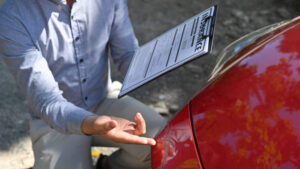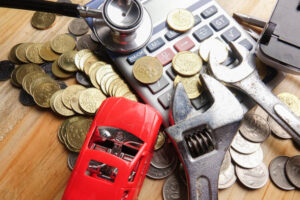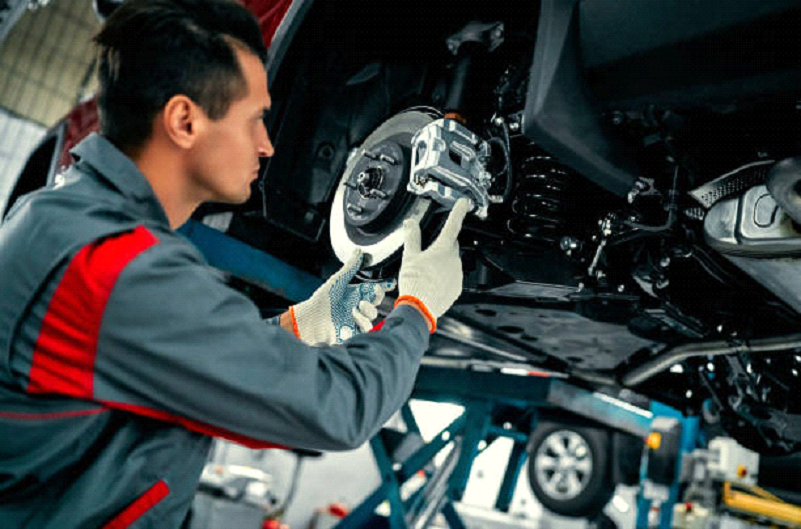Car ownership can be exciting—but let’s face it, it also comes with some financial surprises. One of the biggest? Unexpected repair costs. Even if you’re a careful driver, mechanical issues like engine trouble or transmission failure can show up out of nowhere. And unfortunately, most standard auto insurance policies won’t help you cover those bills.
That’s where car repair insurance—also known as mechanical breakdown insurance (MBI)—can come in handy.
Whether you drive an aging sedan, a recently leased SUV, or a high-mileage used car, this type of coverage could be the buffer that saves you from draining your emergency savings when your car suddenly stops cooperating.
In this guide, we’ll break down what car repair insurance actually covers, what it doesn’t, who it’s best for, and how to decide if it’s worth adding to your vehicle protection plan.
🔍 What Is Car Repair Insurance?
Car repair insurance is a special type of optional insurance that covers mechanical failures and breakdowns not caused by accidents or wear-and-tear. It’s not the same as your regular auto insurance, which typically covers damages related to collisions, theft, or weather events.
Think of it as a warranty-like safety net you can add to your insurance policy—especially useful once your manufacturer’s warranty expires or if you’re driving a used vehicle.
It’s sometimes offered by major insurance providers (like GEICO or Progressive) and may also be available through extended warranty companies or dealership service plans.

🛠️ What Does Car Repair Insurance Cover?
Car repair insurance is designed to step in when your car suffers a mechanical breakdown that your regular policy or expired warranty won’t cover. It can pay for repairs to parts that are essential for your car’s function—but only when they fail due to internal mechanical problems.
Typical covered components include:
-
Engine
Including issues with pistons, crankshafts, oil pumps, and timing chains. -
Transmission
Automatic or manual transmission repairs, clutch problems, and internal failures. -
Drive Axles and Differentials
Covers parts like CV joints and U-joints that allow your wheels to turn smoothly. -
Electrical Systems
Includes alternators, starters, wiring harnesses, and sometimes computer modules. -
Air Conditioning and Heating Systems
Repairs to compressors, condensers, or climate control systems may be covered. -
Fuel System and Cooling System
Such as fuel pumps, radiators, and water pumps. -
Steering and Suspension Components
Including power steering systems, struts, and shocks (in some cases).
Coverage will depend on the provider, and some offer tiered protection with different levels of inclusions.
❌ What’s Typically NOT Covered?
Even the best car repair insurance plans have exclusions. You’ll need to read the fine print carefully, but here are some common items that are generally not covered:
-
Routine maintenance (oil changes, brake pads, tire rotations)
-
Wear-and-tear parts (tires, wiper blades, brake rotors)
-
Cosmetic damage (scratches, paint, dents)
-
Pre-existing mechanical issues
-
Repairs due to neglect or lack of maintenance
-
Aftermarket upgrades or modifications
If the part in question breaks due to misuse or improper maintenance, your claim may be denied.
✅ Why Car Repair Insurance Might Be Worth It
For many drivers, car repair insurance offers peace of mind. Here’s why it might make sense for you:
1. Protection Against Unexpected Costs
Engine or transmission repairs can cost thousands of dollars. With this coverage, you only pay your deductible, and the rest is taken care of—saving you from major financial stress.
2. Helps with Older or Used Vehicles
Once a manufacturer’s warranty expires (typically after 3–5 years or 36,000–60,000 miles), you’re responsible for all repair costs. Car repair insurance can extend that protection, especially useful if you plan to drive your vehicle for many more years.
3. Fixed Budgeting
Having predictable coverage costs helps you plan ahead financially, especially if you’re someone who prefers to avoid surprises in your monthly budget.
4. Added Peace of Mind
You don’t have to stress every time a strange noise comes from under the hood. Knowing you have backup can make car ownership less nerve-racking.

📌 Important Things to Consider Before Buying
Like any insurance product, car repair insurance isn’t for everyone. Before you commit, keep the following in mind:
1. Eligibility Requirements
Not all vehicles qualify. Many providers only offer mechanical breakdown coverage for:
-
New or newer cars (often under 15 months old or with fewer than 15,000 miles)
-
Cars under a specific age and mileage threshold (e.g., under 7 years and 100,000 miles)
2. Coverage Limits
Some plans cap how much they’ll pay per repair or per year. Others may have lifetime limits. Make sure you know what you’re getting into before signing up.
3. Deductibles and Costs
Deductibles typically range from $100 to $500 per repair. Monthly premiums can vary based on vehicle make, model, age, and mileage.
4. Reimbursement Process
Some policies let you use any repair shop. Others require you to go through approved service centers. Understand the claims process to avoid headaches when something goes wrong.
5. Compare with Extended Warranties
Car repair insurance can resemble extended warranties, but warranties often require you to pay upfront for multi-year contracts. Insurance, on the other hand, works more like a subscription with monthly payments and the ability to cancel.
💡 Who Should Consider Car Repair Insurance?
Car repair insurance may be a great fit for:
-
Drivers who own a car outside of its factory warranty
-
Those with limited emergency savings
-
People who drive long distances and put a lot of miles on their vehicle
-
Anyone with an older or used car they want to keep running smoothly
-
Drivers who prefer predictable expenses over surprise repair bills
It might not make sense if you:
-
Have a new car still under warranty
-
Can afford to pay for repairs out of pocket
-
Drive a very reliable vehicle with a proven track record of low maintenance costs
📝 Final Thoughts
Car repair insurance isn’t for everyone—but it can be a smart move if you’re worried about the financial burden of unexpected breakdowns. With repairs sometimes costing thousands of dollars, this type of policy can help you avoid dipping into savings or relying on credit cards to stay mobile.
If you’re considering it, take the time to:
-
Review your current warranty coverage
-
Compare multiple providers and plans
-
Understand exclusions and deductibles
-
Evaluate your vehicle’s age, condition, and repair history
The bottom line? Car repair insurance can offer meaningful protection—especially for drivers with older vehicles or tight budgets. It may not cover every part or every situation, but it can provide valuable peace of mind when your car decides to throw a wrench in your plans.





